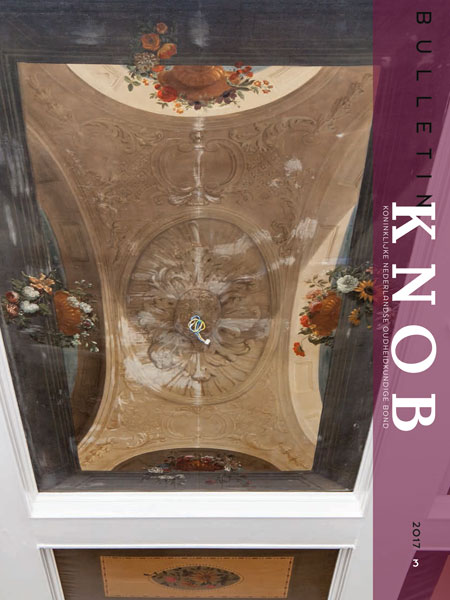Indexering ESCI / Scopus


Ige Versype, Margriet van Eikema Hommes, Annemieke Heuft: De oorspronkelijke gedaante van de geschilderde kamer in het Martenahuis te Franeker Inge Bobbink, Michiel Pouderoijen: De ruggengraat van het laagland. De boezem als schakel in de cultuurhistorische samenhang van het veengebied Dirk J. de Vries: Een vertekend beeld? Opnieuw de toeschrijving van de Dolhuisvrouw Publicaties: Theo Spek, Hans Elerie, Jan P. Bakker en Ineke Noordhoff, Landschapsbiografie van de Drentsche Aa & Landschapsvisie 2.0 Drentsche Aa (recensie: Hans Renes), Ivan Nio, Arnold Reijndorp, Wouter Veldhuis, Anita Blom, Hein Coumou, Nieuw-West: parkstad of stadswijk. De vernieuwing van de Westelijke Tuinsteden Amsterdam (recensie: Noor Mens), Hein Hundertmark, Karel Emmens, Ester Vink, Marjan Witteveen, De versterkte stad Zaltbommel. 900 jaar beschermd door wallen en muren (recensie: Gabri van Tussenbroek), Michiel Kruidenier en Paul Smeets (samenstelling en inleiding), Joan. De Prix de Rome-reizen van een Amsterdamse School-architect (1907-1910). Joan Melchior van der Meij (recensie: Rosa Visser-Zaccagnini)
The Martenahuis in Franeker contains a special room whose walls and ceiling are decorated with vast paintings on canvas. Such fully painted rooms were very popular in the northern Dutch provinces from the last quarter of the seventeenth century and were called ‘painted rooms’ or ‘rooms in the round’. Owing to later additions and alterations, the painted room in the Martenahuis presents a disjointed picture today. The room’s original appearance has been reconstructed with the help of material-technical, art-historical and archival research. It transpires that all the elements of the room...
Given that the polder boezem* system, and in particular its network structure, is crucial to the spatial identity of the Dutch cultural landscape, a thorough cultural- historical understanding of that system is a precondition for the effective implementation of necessary future changes to the system. The boezem system in the western part of the Netherlands evolved over a period of more than five hundred years and exhibits considerable local differences in structure and form. It developed in response to a combination of a falling ground level and a rising sea level, which meant that...
Who created the Dolhuisvrouw (Madhouse Woman) and when? The debate surrounding these questions can be traced back to two art historians, Elisabeth Neurdenburg and Juliane Gabriels. This article provides a response to Frits Scholten’s article on the subject in Bulletin KNOB no. 1, 2017, a few additions to my own article in Bulletin KNOB no. 2, 2016, and a conclusion about the art-historical context of the attribution of the Dolhuisvrouw. Scholten, who is in agreement with Gabriels’ 1930 monograph, Artus Quellien, de Oude ‘Kunstryck belthouwer’, quotes part of her argumentation and fully...
Boekbespreking van een boek geschreven door Theo Spek, Hans Elerie, Jan P. Bakker en Ineke Noordhoff.
Boekbespreking van een boek geschreven door Ivan Nio, Arnold Reijndorp, Wouter Veldhuis, Anita Blom en Hein Coumou.
Boekbespreking van een boek geschreen door Hein Hundertmark, Karel Emmens, Ester Vink en Marjan Witteveen.
Boekbespreking van een boek geredigeerd door Michiel Kruidenier en Paul Smeets.


open access mogelijk gemaakt door Stichting OpenAccess
